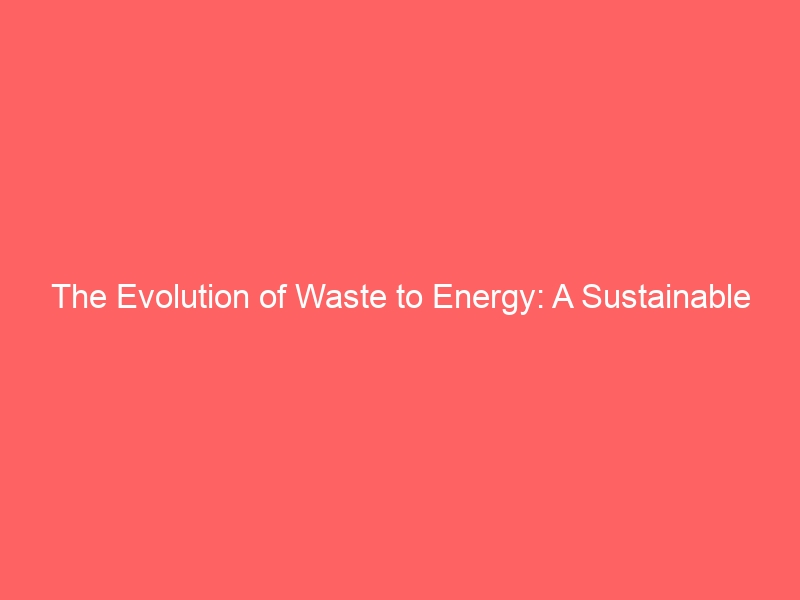Waste to energy technology has come a long way in recent years, and it is now considered a sustainable solution for renewable energy. This innovative approach to generating power is not only an environmentally friendly alternative to traditional fossil fuels, but it also helps to alleviate the strain on landfills and reduces the emission of greenhouse gases.
The concept of waste to energy is simple: instead of allowing organic waste materials, such as food scraps and yard trimmings, to rot in landfills and release harmful methane gas into the atmosphere, they are instead converted into energy through a process called anaerobic digestion or incineration. This process not only produces electricity and heat, but it also significantly reduces the volume of waste that ends up in landfills.
The evolution of waste to energy technology has been driven by the increasing demand for renewable energy sources and the need to find sustainable solutions for managing the growing volume of waste generated by modern society. As a result, new and more efficient methods of converting waste into energy have emerged, making this technology more viable and cost-effective.
One of the most significant advancements in waste to energy technology is the development of advanced incineration facilities that use state-of-the-art combustion technology to generate electricity from waste. These facilities are equipped with pollution control systems that capture harmful emissions, such as sulfur dioxide and nitrogen oxides, before they are released into the atmosphere. This means that waste to energy plants can now operate without significant environmental impact, making them a cleaner and more sustainable energy source.
Another important advancement in waste to energy technology is the use of anaerobic digestion to convert organic waste materials into biogas, which can then be used to generate electricity and heat. This process is not only an effective way to reduce the volume of organic waste in landfills, but it also produces a renewable energy source that can be used to power homes and businesses.
In addition to these technological advancements, waste to energy facilities are also becoming more integrated with traditional power grids, allowing them to inject renewable energy into the electrical system. This not only helps to reduce reliance on fossil fuels, but it also ensures a more stable and sustainable energy supply.
As the world continues to face the challenges of climate change and environmental degradation, waste to energy technology is increasingly being recognized as a valuable tool for reducing greenhouse gas emissions and promoting sustainable energy production. With ongoing advancements in technology and growing public awareness of the benefits of waste to energy, it is clear that this innovative approach to renewable energy will play a crucial role in the transition to a more sustainable future.






